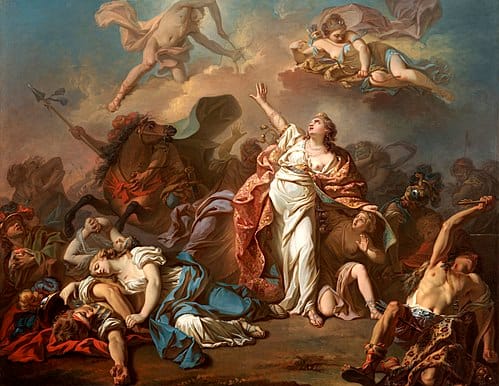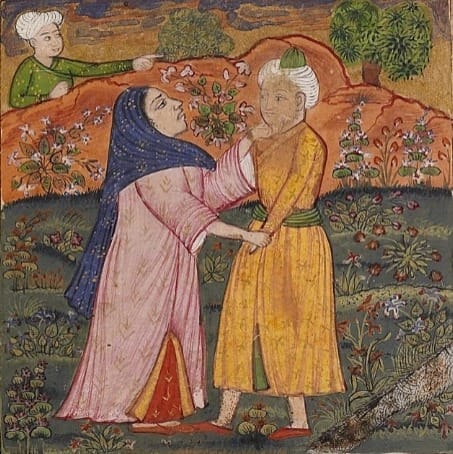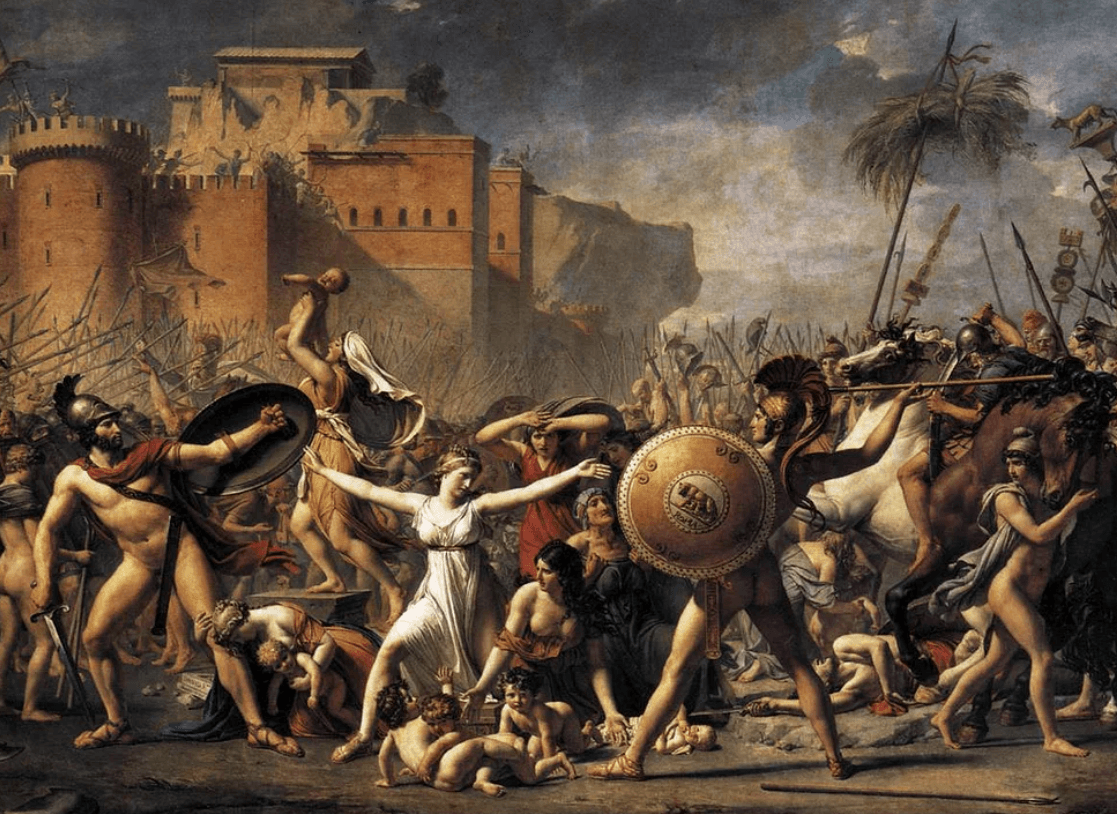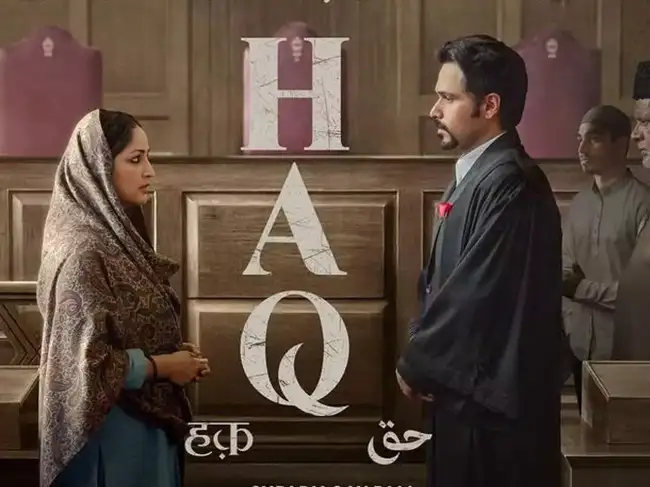In most of the patriarchal myths, women are subjected to false identification with inappropriate mythological characters, distancing themselves from their authentic perspectives.
Myths are traditional narratives passed down through generations, carrying with them the implicit validation of the collective identity of a particular cultural group. Besides fulfilling multiple functions such as imparting moral teachings and safeguarding cultural legacy, myths also serve as the tools of ideological interpolation, promoting specific political, cultural, social, and patriarchal agendas.
Females, who make up half of humanity, have endured millennia of being mute spectators of myths in which women are typically marginalised, given underdeveloped roles, and remain subjected to patriarchal stereotyping. Most of such ancient myths are deeply grounded in patriarchal, misogynistic traditions, often perpetuating gender inequities by portraying a world in which female figures are viewed reductively, purely in terms of their passivity.
The villainy of the bad woman, the victimhood or the non-existence of a female character of integrity remains constant throughout, though it might show up in varied ways. These constant factors from mythic tales, later on, transform into gender stereotypes.
Women in classical myths
A comprehensive examination of various myths from world mythology reveals that the female characters are often depicted as either ominous beings or victims of power. For instance, we see Medea, a murderess; Circe, a sorceress; Hera, a vengeful goddess; and Jezebel, a harlot queen; Xi Wang Mu, a demonic figure; and Sila, a treacherous spirit. Similarly, the religious myth of creation portrays Eve as the devil’s proxy.
Women in Greek and Roman mythology
The Greek mythological corpus comprises a wide array of myths, like creation myths, animal myths, disaster myths and hero myths. The majority of Greek myths have been recognised as misogynist for participating in the process of typecasting women by arresting their identity within negative images and reductive roles.
Roman mythology is largely believed to be an emulation of Greek mythological tradition, as most of the early Roman stories are modelled after the great Greek myths. The status of women in Roman society bears a close resemblance to ancient Greece, where women were considered the inferior sex, incapable and vulnerable.
The patriarchal underpinnings embedded in the Greek myths can be clearly discerned from the myth of the origin of Pandora, the first mortal woman, who, though forbidden to open a box gifted by Zeus, opens it out of curiosity, releasing all despair and misfortune upon mankind. This myth resonates with the biblical Eve, who is seen as the Original Sinner for being seduced towards the Tree of Knowledge, enticing and corrupting Adam thereafter. Caricaturing the origin of women through such fabricated myths reinforces the feminine stereotype as the harbinger of evil for humanity.
Similarly, the majority of mythical women featured as immortal goddesses in Greek myths are depicted under the control of male gods. In the realm of humans, the Greek hero myths feature the royal women of Greece and Troy, like Queen Helen or Hecuba, as mere pawns at the hands of men.

Women also represent the monstrous level, in the form of gorgons and witches. Their treachery and malignity are projected by their negative superpowers. For example, among the three Gorgons, the mortal Medusa, with her immortal siblings Stheno and Euryale, symbolically denotes a dangerous threat for her gaze turns men to stone.
Roman mythology is largely believed to be an emulation of Greek mythological tradition, as most of the early Roman stories are modelled after the great Greek myths. The status of women in Roman society bears a close resemblance to ancient Greece, where women were considered the inferior sex, incapable and vulnerable. The treatment of women in the myth of Aeneas proceeds along similar patriarchal dictates, which promote the exclusion of women from the male-dominated spheres of life.
Female characters such as Juno and Dido, Camilla and Lavinia serve as plot tools within the overarching heroic quest of Aeneas – the male protagonist. The narrative also caricatures monstrous women like the Harpies and the Furies, who assume a negative role in the myth. The divine Juno, though a deity, is portrayed as the instigator of violence throughout the myth. Similarly, Aeneas’ mother Venus is a deceptive goddess. Far from being a compassionate mother, she plays tricks on her own son.
Arab and Egyptian myths
The mythology originating from the Arabian Peninsula encompasses a wide-ranging and culturally significant tapestry. The manifestation of gender roles and stereotypes in Arabian mythology, akin to numerous mythologies, mirrors the prevailing societal norms and attitudes that were in existence during the period in which these myths were originated and disseminated.

Arabian mythology frequently exhibits characteristics of patriarchal societies, wherein males occupy positions of power and authority in both the mortal realm and the divine domain. The narratives frequently revolve around male deities and heroes, whose actions play a pivotal role in shaping the storyline. While patriarchal elements are prevalent, Arabian mythology encompasses a pantheon of goddesses and female deities, who hold significant roles in religious and mythological contexts. These deities are often associated with the realms of nature, fertility, and wisdom.
The myths that have their origins in the eastern regions of Arabia, specifically Sumeria, Babylon, and Assyria, and can be traced back to the third millennium BCE, feature a diverse array of female deities. These include Inanna/Ishtar, who is revered as the goddess of beauty and warfare; Ereshkigal, the goddess associated with death; Ninhursag, the goddess connected to childbirth; Tiamat, the goddess presiding over the sea; and Ninkarrak, the goddess associated with healing.
In Egyptian mythology, several noteworthy goddesses played significant roles in the daily lives of individuals. Among these deities, Isis held a position of utmost importance, being regarded as the supreme entity. Additionally, Hathor, the goddess associated with music, and Neith, the goddess associated with warfare, held considerable power and were capable of both constructive and destructive actions.
Arabian mythology also features various supernatural creatures like the pary, portrayed as aesthetically pleasing and possessing the capacity to beguile men through their charm and sensuality. Maridah and Si’lwah are known for their ability to undergo metamorphosis and are frequently portrayed as formidable, cunning, and maleficent female entities, commonly linked to disorder, trickery, and seduction. Similarly, Ifritah, according to Arabian mythology, is a fierce, cunning, seductive, and dangerous being exhibiting significant physical power and the ability to inflict damage and injury.
The Qarinah is also a female demon who shares similarities with the Succubus in Western tradition. Like the Succubus, the Qarinah is associated with seduction and malevolence. It is commonly believed that they engage in seduction and exploitation of men, depleting their life energy through sexual encounters. Jezibaba, a mythical witch or sorceress appearing in Slavic and Balkan folklore, is frequently depicted as cruel and nasty. She is famous for dark magic, curses, and the ability to transform people into animals or objects.
In certain Islamic traditions, it is postulated that Iblis, commonly known as Satan, is purported to have progeny in the form of daughters, frequently referred to as Banat Iblis or Daughters of the Devil. These mythical creatures are often linked to the ideas of temptation, deceit, and the act of diverting individuals away from the virtuous path. Therefore, like other mythologies around the world, women in Arabian mythology are also portrayed in a variety of nuanced and multifaceted ways.
Southeast Asian folklore
In Southeast Asian folklore, the Krasue is a nocturnal female spirit who appears as the head of a young, attractive lady floating in midair and her internal parts trailing behind. It is thought to be a cursed person who committed misdeeds in a past life.
According to legend in Cambodia, the Ahp is a demonic spirit that resembles a witch and manifests as a human during the day before leaving its body at night to consume raw meat, blood, corpses, and other repulsive objects. To fend against them, one uses thorns.
Feminist intervention
An emergence of the concept of unearthing the marginalised female figures from historical legends and myths has ignited a discourse among revisionist novelists. This has generated discussions surrounding the historical and epistemic injustices faced by women over time immemorial.
The process of envisioning and re-evaluating established chronicles from a female perspective aims to question the traditional gender roles, moral conventions, and absence of female agency, specifically patriarchal power dynamics.
About the author(s)
Insha Qayoom Shah is a Research Scholar from the Department of English, University of Kashmir pursuing her PhD on Female Revisionary Mythmaking: A Study of Select Novels. The areas of her interest include Feminism, Mythology and the Revisionary literature. She has presented four papers in different national and international conferences. She has also contributed chapters in three books dealing with the feminism and gender studies.






